In my very first moments in Rwanda, the first African country I have ever visited, a friendly local airport clerk reached out and kindly asked me to dispose of the plastic bag in which I had the clothes I bought in the Istanbul airport on my way over.
“Can I just put it in my suitcase?” I asked.
“No. I’m sorry, but we don’t have plastic bags in our country,” he said, pointing to the garbage can that was full of plastic bags other tourists had to throw out.
Only later did I figure out why: this country is one of the cleanest and most environmentally friendly in the world. Whether in rural villages, the sides of the roads or downtown, this country is ultra-clean.
Rwanda came to the attention of the world under unfortunate circumstances. In the 100 days between April 7 and July 15, 1994, around 1.1 million citizens were slaughtered in the Rwandan genocide.
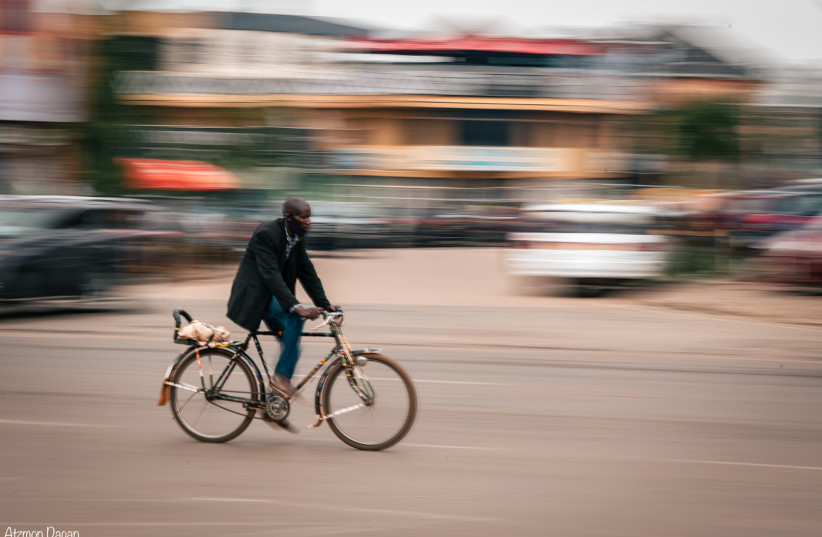
But the country today is all about regeneration. The government that was established since then, headed by President Paul Kagame, who has been in office since 2000, invested everything in recovering society, side by side with recovering the environment and protecting wildlife animals.
This includes a unique competition that the state holds on the last Saturday of every month, in which residents of the villages and towns are encouraged to clean up the streets, and in return, the country will grant them prizes – from playgrounds to public buildings.
These Saturdays are also used to perform the “Gacaca” – a tribal court mechanism led by local leaders, and is used for reconciliation between residents.
“The idea of Gacaca was used also at the national level, after the genocide,” said Magnifique Niyongira, a local tour guide. “The main idea is to forgive, and put the past behind us,” implying that the physical cleaning of the country is like the cleansing of the soul.
Rwanda is a small, landlocked country located in the heart of Africa, bordering Burundi, Tanzania, the Democratic Republic of Congo and Uganda.
Its population is approximately 12 million people, the majority of whom are Roman Catholic. There are also Evangelicals, Anglicans and a small minority of Muslims. There are also a few dozens of Jews living in the capital, Kigali, led by a local Chabad rabbi.
The country is called “the land of a thousands hills,” and driving along its roads reveals the beauty of these green hills, decorated by various farms – mostly tea and coffee fields. Most of the country stands around 1,000 meters above sea level, and the highest summit in the country is Mount Karisimbi, which is 4,507 meters.
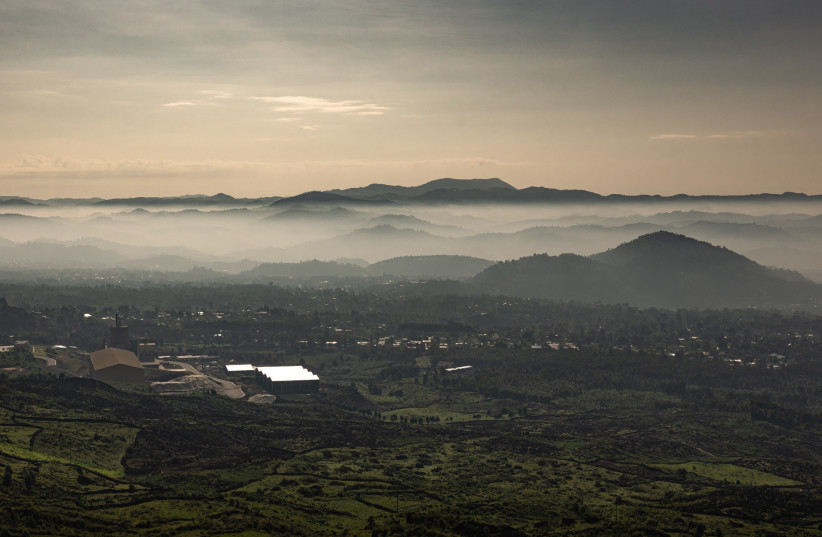
Giraffes, lions, and hippos: Akagera National Park
Our eight-day tour began in the eastern part of the country, where a small lake stands as a border between Rwanda and Tanzania.
Above the lake is the country’s safari – Akagera National Park – which is the home of all the Big Five: lions, leopards, rhinos, elephants, and African buffalo. Zebras, giraffes, baboons, antelopes and monkeys are also abundant there.
We entered the park the night before the safari trip and slept at Akagera Game Lodge, a luxurious hotel with a breathtaking view of Lake Ihema.
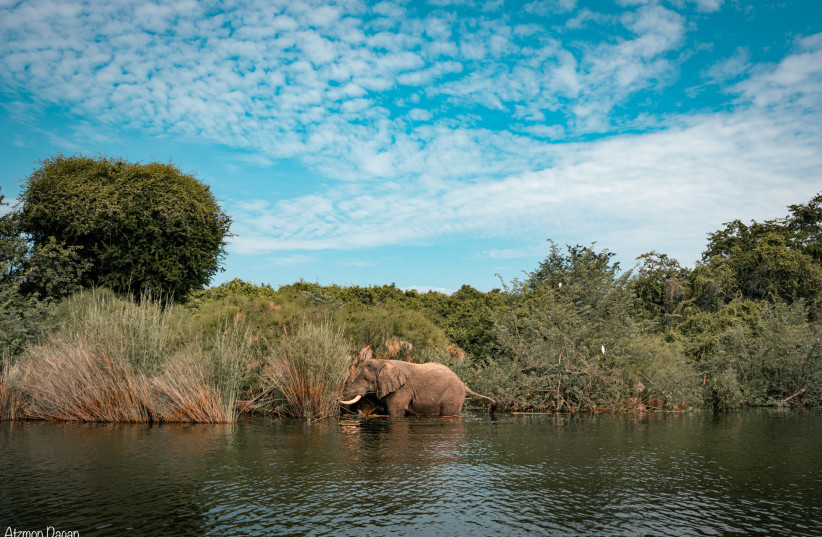
Visiting nature sights in Rwanda requires one big sacrifice: waking up early. And so we got up before dawn the next day, jumped into our jeep and drove into the unknown. While the Rwanda safari is smaller than those in neighboring countries, a one-day trip is enough to be blown away by the beauty of nature.
After climbing from the lower part of the park to the hills on top, herds of zebras, giraffes and elephants could be seen all around, covering the green landscape. Rhinos and hippos were also visible in the distance.
The Akagera used to be twice as big, but after refugees of the genocide returned to their homeland, half of it was given for housing and agriculture.
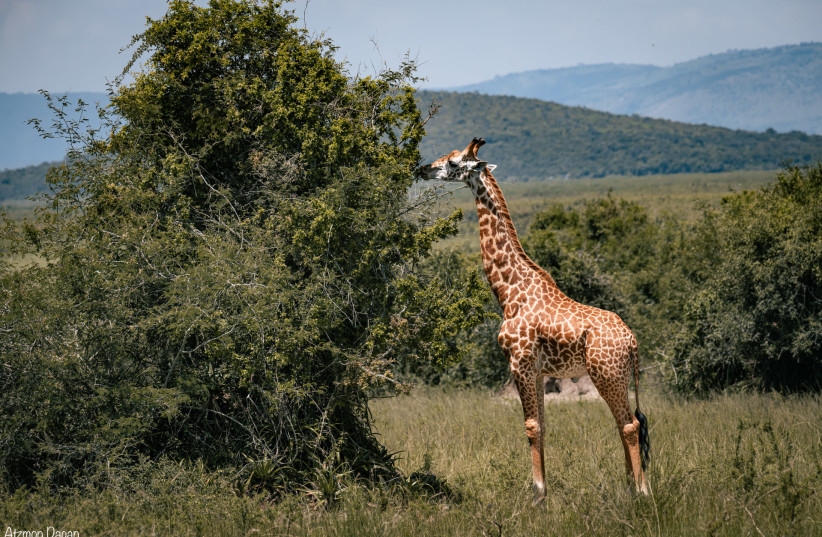
The animals in the park were hunted by locals until the government put an end to it.
Janvier, a ranger in the park, said the government encouraged local poachers to become rangers and avoid prosecution.
“I grew up in a village not far from the safari,” he said. “My dad was a poacher and I used to join him. We would sell what we caught in the local market. But when I grew up I decided that protecting our animals is more beneficial than killing them.”
Janvier said that to gain the support of locals to the national effort, the state grants a certain percentage of the park’s revenues to the adjacent villages.
The entrance fee to the park is $100 per person, and a car with a tour guide costs another $50 per day.
The cherry on top: Mountain gorillas
From the Akagera we head to the northwestern end of the country, to the town of Musanze. Rwanda is a small country, only 26,000 sq. km. (slightly smaller than Massachusetts), but traveling time is long. There are only a few paved roads, and they are used by slow trucks, bicycle riders (the most common means of transportation in the country) and pedestrians. Almost everywhere we saw women carrying commodities on their heads from one place to another.

Rwanda is rapidly developing economically, but it is not a rich country. Around 80% of Rwandans work in agriculture, whether on their own plot of land or for landowners. The top daily salary of a farmer is 1,500 RWF, around $1.50, which is why people mostly walk or bike. Motor vehicles are mostly seen around big cities.
During our long drive, we saw many people along the sides of the roads. Some were just sitting, watching the road. Some waved at us and asked: “Amakuro?!” “How’s it going,” in Kinyarwanda, the national language and one of the four official languages. We answer “Ni meza,” “Everything is alright.”
Rwandans seemed to be excited to see an Israeli.
“I want to visit Israel, the Holy Land,” said Paul, a hairdresser who owns a barbershop in Kigali. “We want to see more Israelis here.”
We reached Musanze late at night, but awoke in the morning to see the beauty of the five volcanoes surrounding it.
None of them is active, and in the national park where they are located – Volcanoes National Park, which is shared with Uganda and DR Congo – live 604 mountain gorillas. This is the only area in the world where endangered mountain gorillas live freely in nature.
The mountain gorillas are a national icon in Rwanda. There are posters of them everywhere and figurines, dolls and statues of them are sold all around the country. Even the highest note of the Rwandan franc – 5,000 RWF – has a gorilla on it.
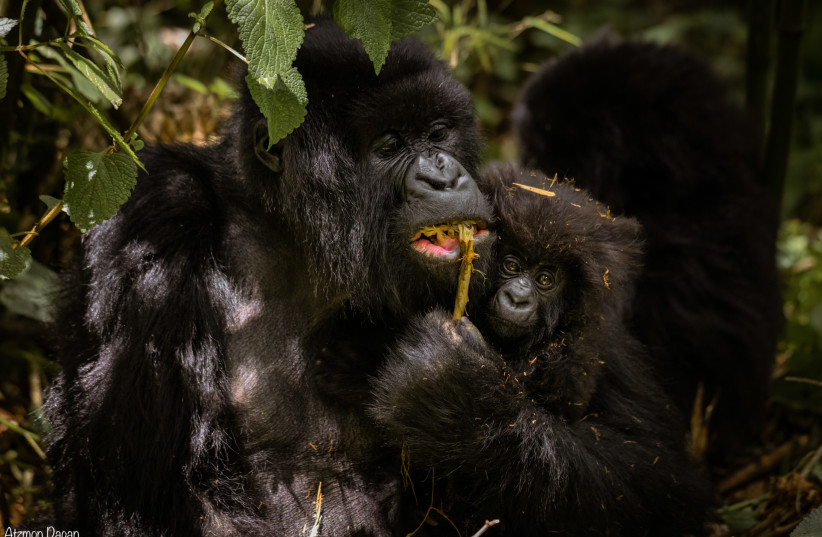
Finding the gorillas is not easy, and requires an entire operation. To get to them, we hired a guide who showed us the way. He was in touch with the trackers, who scout the park every morning and track down the movement of the 12 gorilla families living in the park.
The authorities allow groups of up to six to meet a gorilla family. They also limit it to only 12 groups a day.
Coronavirus rules regarding the gorillas are very strict as well: a tourist is required to take a PCR test 72 hours before the hike, and wear a mask the entire stay with them.
The hike up to the gorillas, going uphill to an altitude of around 3,000 meters above sea level, took us around three hours. At some point the guide announced that we were going off the track, and paved a way for us with his machete.
Walking inside the thorny bushes wasn’t easy, but suddenly he stopped and pointed at a moving black object. In less than a minute, a family of gorillas – the Susa family – arrived and stood right in front of us.
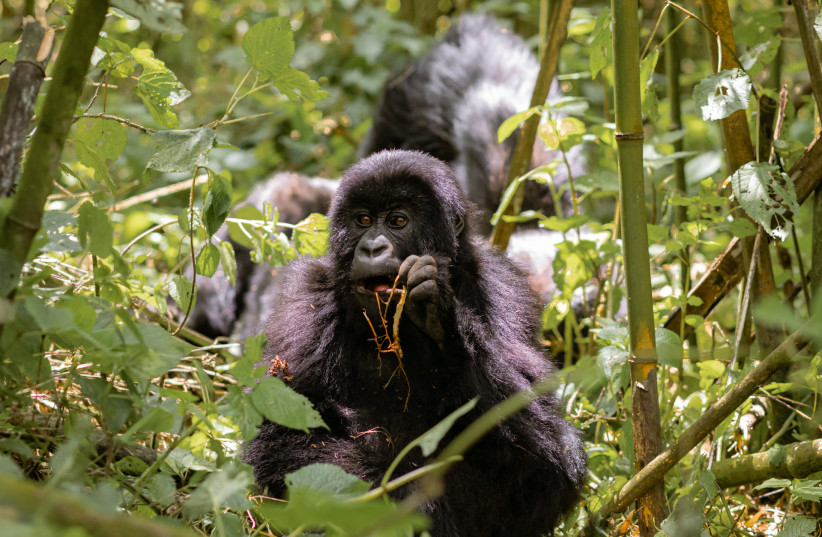
Seeing them from so close is a breathtaking experience. Just meters away, they took their break for the next hour or so. The older gorillas sat down and the kids started playing and running around. A mommy gorilla was breastfeeding her baby, while others peeled bamboo shoots and chewed on them.
The leader of the family, called the “silverback,” sat the entire time in the middle with his eyes closed and seemed to be meditating. After around an hour, in which we were all hypnotized by the experience, the silverback got up, and all the other gorillas stopped goofing around and looked at him in fear. When he started walking, they all followed him, like soldiers obeying their respected leader. They vanished into the bushes to their next adventure, and we started heading down back to the camp.
On our way back, we saw working villagers, who were excited to meet tourists. They wanted to take selfies with us, and sell us wooden statues of gorillas they carved.
Outside the park, we passed by the Gorilla Guardians Villages. Here, too, people who used to be hunters have changed their ways, now operating a tourism site where they show off traditional Rwandan life, which includes dances, songs and how to make banana beer.
A visit with the gorillas costs $1,500 per person. Discounts are given to large groups, with the entrance fee ranging between $500 and $800 per person.
The rain forests of Rwanda
From the volcanoes we headed south and passed by the magnificent Lake Kivu, which lies at an altitude of 1,460 meters above sea level, and is the border that separates Rwanda and DR Congo. In the northern distance, we could see Mount Nyiragongo in Congo, an active volcano that erupted last May.
The lake, 89 km. long, offers a variety of activities such as canoeing and boat rides, picnics on the shore, a visit to a coffee plantation, which is one of the main exports in the country, and luxurious hotels that are located right by the lake.
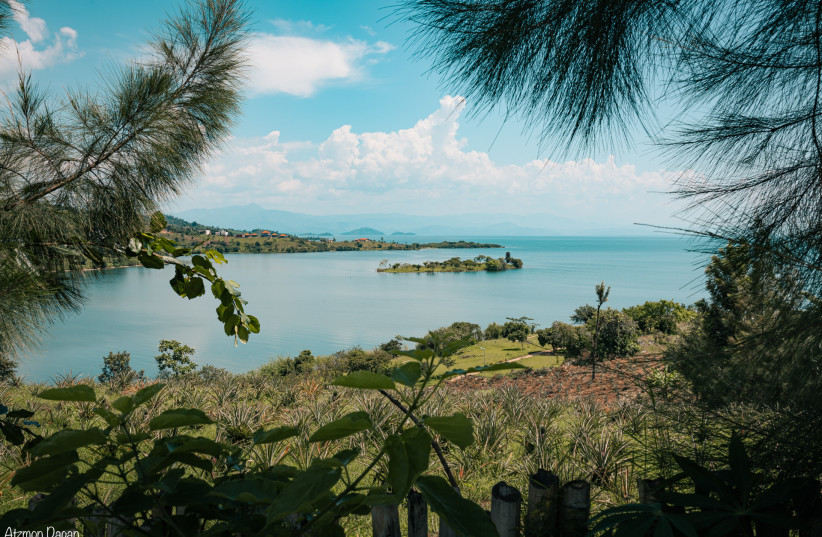
If you happen to be there during sunrise or sunset, don’t miss the fishermen’s song. Every day before and after work, while the fishermen row to their destination, they sing a magical song that makes the lake even more beautiful.
South of the lake is Nyungwe National Park, one of the oldest rain forests in Africa and home to 500 chimpanzees.
The hilly terrain and the constant rains make hiking quite difficult even for experienced travelers. However, seeing a family of around 30 chimpanzees in nature, jumping around from one treetop to another and screaming at each other, is a unique experience.
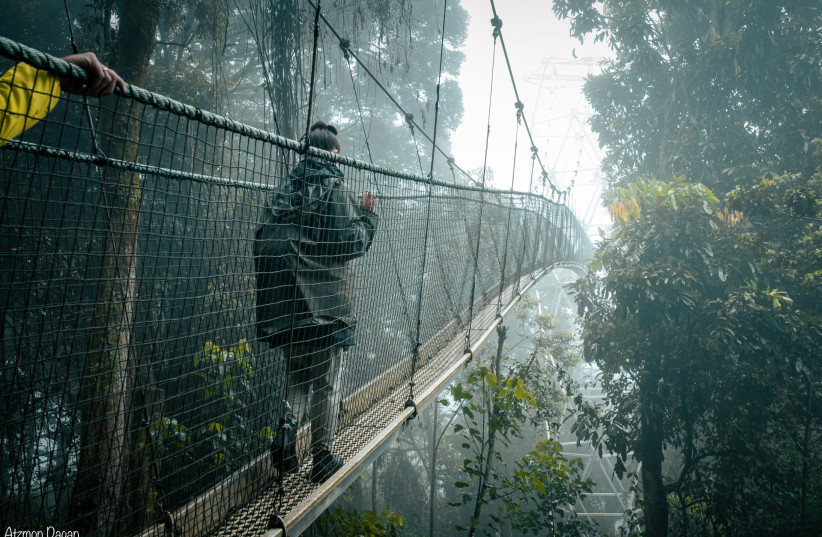
The main attraction in the park, besides the chimpanzees, is the Canopy Walkway, a 160 meter-long and 70 meter-high suspension bridge, the longest in Africa.
The hike to the Canopy Walkway costs $60 per person, and the chimpanzees trek is $90 per person.
Israel and Rwanda
Rwanda is one of 12 African countries that has an Israeli ambassador. The embassy was inaugurated in February 2019, and since then, Ron Adam has been the ambassador there.
Israel’s main efforts in the country are assisting with developing advanced agriculture, finding sustainable energy solutions, and carrying out communications and cyber enterprises.
Adam, a son of Holocaust survivors, who has a PhD in history from the University of Haifa, said that as an ambassador, he encourages locals to document their memories of the 1994 genocide.
“I urge them to write down their personal stories,” he said. “These stories should be told for two purposes: the [national] healing process, and to face genocide-deniers,” which is becoming a growing phenomenon as people who committed genocidal crimes almost 30 years ago are now being released from prison.
“There is a big resemblance between the Holocaust and the genocide,” Adam said. “There were lists of people who were meant to be killed every day. An average of 10,000 people were murdered every day. And it was backed up with inciting propaganda, which said that those who need to be killed are snakes or cockroaches.”
In the center of the capital stands the Kigali Genocide Memorial. Structured in a way that resembles Yad Vashem, it tells the chronological story of the genocide, from the colonialist days through periods of incitement until the mass murders. It also presents a hall of memories with personal photographs of the victims and their clothes.
Rwanda’s story is about a country that rose up from the ashes, deciding to put the past behind it and invest in people, animals and nature. My eight-day trip showed that the population is on board with this idea, and people are working to make it succeed.
Traveling throughout the country also shows how a small place like Rwanda is trying to put itself on the international map – even in rural villages, the flags of the US, China, Belgium and other countries can be seen, indicating that international programs are carried out there.
The Israeli tourist who visits Rwanda will find a safe place to travel, a relatively small country where many attractions are accessible within a short distance and a variety of activities and Western-standard accommodations are available.
How to get there, when to go
The easiest way and most convenient way to get from Israel to Rwanda is through Istanbul with Turkish Airlines. There are five weekly flights between Istanbul and Kigali, and the average flight is six and a half hours. Starting March 27, there will be 56 weekly flights between Tel Aviv and Istanbul Airport. A flight package from Tel Aviv and Kigali starts at $650.
Turkish Airlines flies to 37 destinations in Africa, and is considered to be the best way to get from Israel to most countries on the continent.
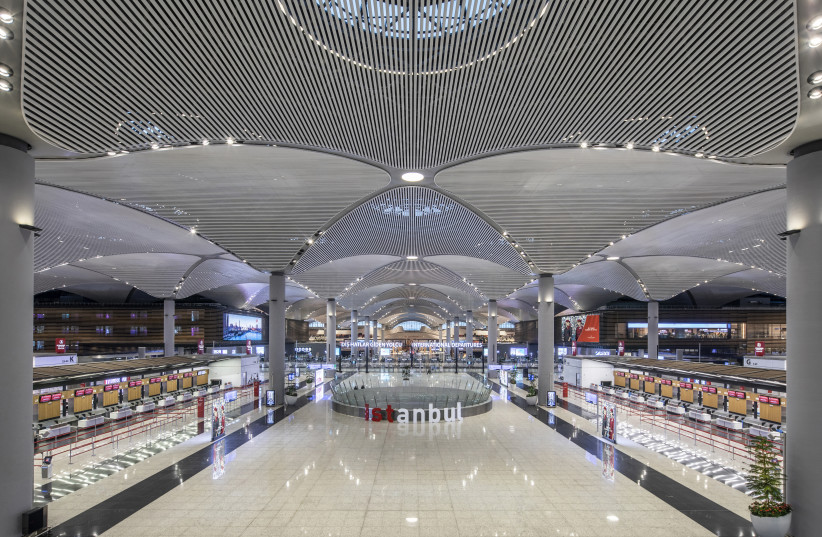
There are two seasons in the equatorial country of Rwanda: wet and dry. It is recommended to visit the country in the dry season, from June to September and December to February. The temperatures are the same the entire year, around 28° during the day and° 18 at night.
The writer was a guest of the Rwanda Development Board (RDB) and Turkish Airlines.
